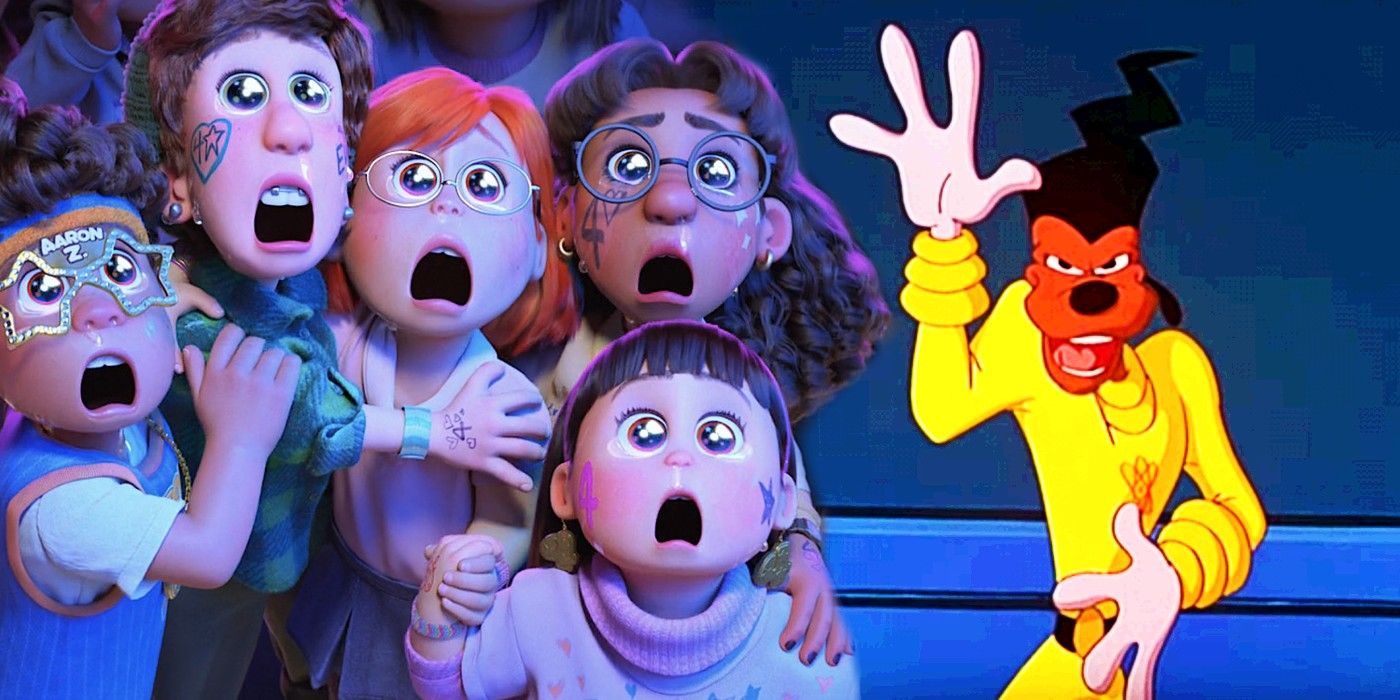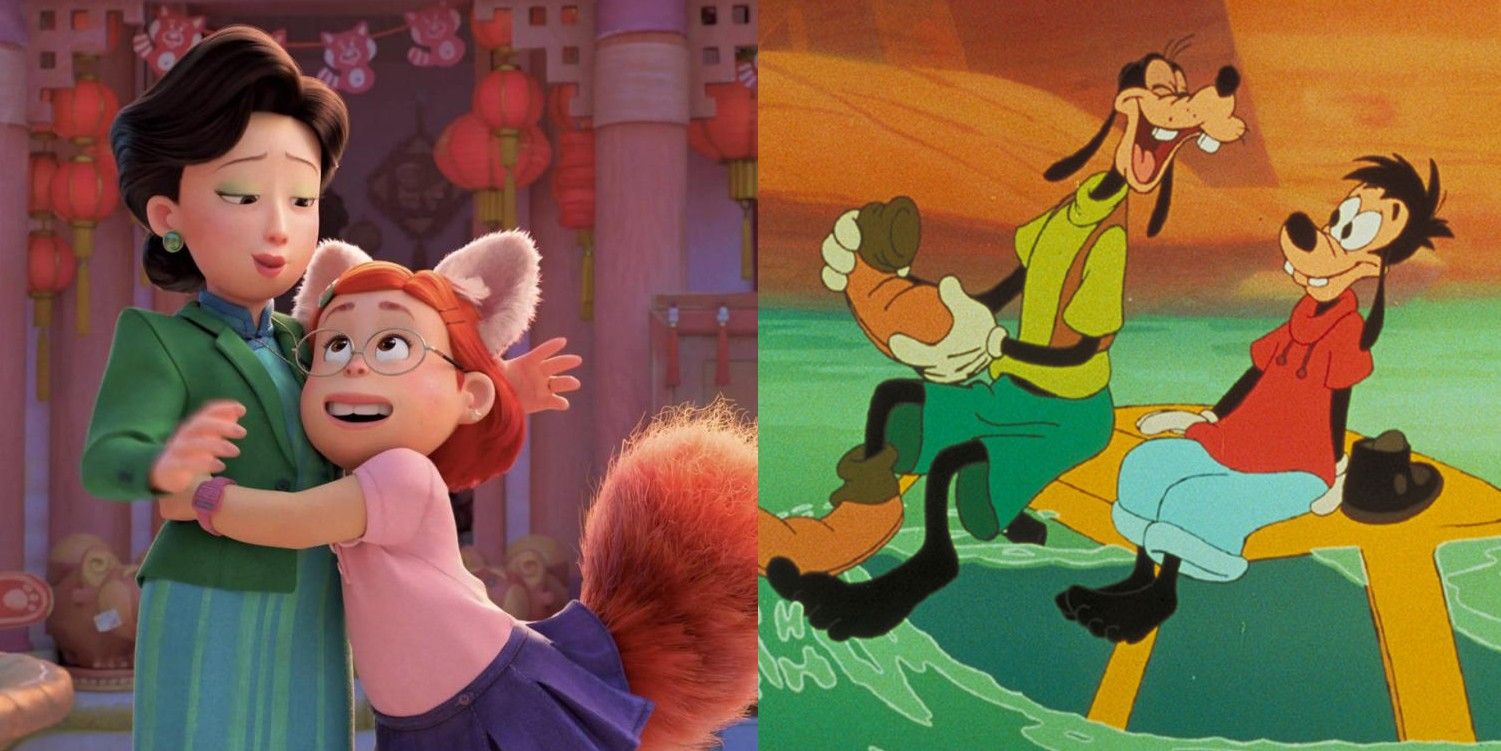Pixar's Turning Red revisits the story of the 90s Disney cult classic A Goofy Movie, but with a twist. At its heart, Turning Red is an animated coming-of-age tale based largely on director Domee Shi's experiences growing up as a Chinese-Canadian kid in Toronto in the early 2000s. Taking inspiration from her childhood, Shi included lots of 90s and 2000s Easter eggs and references throughout Turning Red. Many of the film's themes—and even a few plot points—are even borrowed from the often-referenced 1995 Disney classic A Goofy Movie.
In Turning Red, 13-year-old Chinese-Canadian girl Meilin Lee wants to hang out with her best friends and go to see her favorite boyband 4*Town in concert, but on top of experiencing normal puberty and the everyday challenges of being a tween, she turns into a giant red panda every time she's emotional. On a deeper level, Turning Red addresses what it's like to be stuck between family expectations and the search for an identity outside of the family. Mei's mother Ming fears that Mei's panda will be out of control, just as Ming's is, and it's difficult for Ming to accept that her daughter actually enjoys her panda and has more control of it than she did. The pushback that Mei gets from her mother is all well-meaning, and while the two of them have a big final battle at the 4*Town concert, the concert is ultimately where their relationship is reconciled.
If all of this sounds familiar, it's because Disney told a similar story nearly 30 years ago in A Goofy Movie, starring Goofy and his teenage son Max. Just like Mei and her friends are obsessed with 4*Town, Max is obsessed with the biggest pop star in their world, Powerline. Max plans to trick his dad into taking him to the Powerline concert in L.A. instead of their planned father-son fishing trip that is a Goof family tradition. Like Mei and her mother Ming in Turning Red, Goofy clashes with Max over his son's search for autonomy outside of his relationship with his father. Both movies also end with a big pop concert that ultimately leads to a moment of reconciliation and understanding for the parent and teen with the help of the teen's favorite pop stars.
Both Goofy and Ming love their now-teenage children, but it is also difficult for them to let go of the images that they have of Max and Mei at a much younger age. They both let their fears—primarily about their children making the wrong choices—lead them to overprotective behaviors that Max and Mei eventually push back against. The road trip that Goofy takes with Max and the ceremony that Ming pushes Mei into are both attempts to protect their children from themselves. Goofy assumes that Max will become a delinquent after Max gets in trouble for crashing an assembly at school with his Powerline impression. He believes that taking Max on a road trip that Goofy's own father took him on years ago will keep Max from going down the wrong path. Similarly, in Turning Red, Ming fears Mei's panda being as big and out of control as her own, leading Mei to potentially hurt herself and others.
Max and Mei's pop star obsessions, Powerline and 4*Town, represent the teens' desire to find their own identity outside of their parents. Going to a concert is a marker of independence, and musical taste is one of the first ways that most teens express their individuality. Both A Goofy Movie and Turning Red's endings take their respective teen to a pop concert where they are forced to reconcile with their parent. In both movies, the pop icons help the teens do so; 4*Town by singing to help remove Ming's panda, Powerline by doing the "perfect cast" dance with Goofy and Max. In both Turning Red and A Goofy Movie, the lesson learned is that even though Mei and Max are becoming their own, more independent people, their parents will always be part of who they are.


